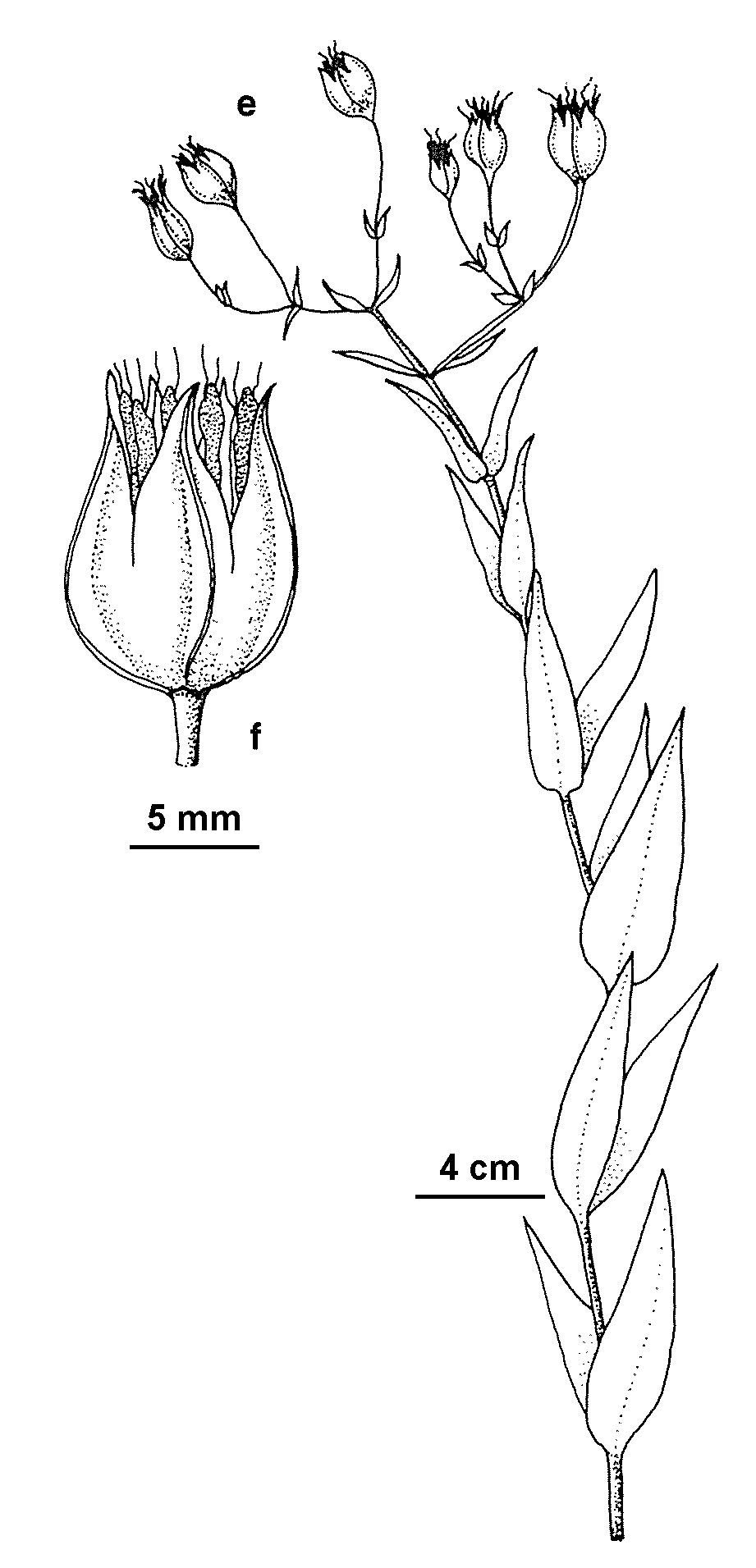Gypsophila vaccaria
(L.) Sm. Cow SoapwortAnnual; stems erect, branched above, 30–60 cm high. Leaves sessile, amplexicaul, glaucous, 15–70 mm long, 5–20 mm wide; lower leaves ovate to lanceolate, upper leaves oblong-lanceolate. Inflorescence lax, many-flowered; bracts scarious with green midrib; pedicels 10–35 mm long; calyx cylindric-ovoid, becoming broad-ovoid in fruit, 10–17 mm long, calyx-lobes triangular-acute; petal-limb 3–6 mm long, pink or purplish, entire, dentate or slightly emarginate; styles 2. Capsule ovoid to subglobose, 6–13 mm long, with 4 teeth; seeds subglobose, blackish-red, minutely tuberculate, 1.8–2.5 mm diam. Flowers Oct.–Nov.
LoM, MuM, Wim, VVP, CVU, EGU, HNF. Also naturalised WA, NT, SA, Qld, NSW. Native to southern and central Europe, western Asia, but widely introduced elsewhere in the world. A widespread weed of cultivated and waste ground in extra-tropical Australia.
This species was previously included in Vaccaria, but is now included in an expanded Gypsophila (Madhani et al. 2017).
Adams, L.G. (1996). Caryophyllaceae. In: Walsh, N.G.; Entwisle, T.J., Flora of Victoria Vol. 3, Dicotyledons Winteraceae to Myrtaceae, pp. 228–271. Inkata Press, Melbourne.
 Spinning
SpinningMadhani, H.; Rabeler, R.; Pirani, A.; Oxelman, B.; Heubl, G.; Zarre, S. (2017). Untangling phylogenetic patterns and taxonomic confusion in tribe Caryophylleae (Caryophyllaceae) with special focus on generic boundaries. *Taxon * 67(1): 83–112.

